Striking the perfect balance between cost, quality, and speed in custom label production is akin to finding the holy grail for businesses of all sizes. As consumer expectations soar and market dynamics shift at breakneck speed, the pressure on brands to deliver exceptional products without breaking the bank or missing critical deadlines is more intense than ever.
In this blog, we’re going to have a heart-to-heart about finding that sweet spot between spending wisely, ensuring your product labels look fantastic, and making sure they’re ready when you need them. So, let’s dive into some practical tips, explore some innovative approaches, and maybe uncover a few surprises about the custom label printing process along the way. Because, at the end of the day, it’s about making your products pop off the shelves and into shoppers’ baskets without spending an arm and a leg or waiting an eternity.
Defining Custom Label Production
Think of custom label production as a finely tailored, designer suit for your product. It’s not just about slapping on a sticker; it’s about creating a label that perfectly fits your brand’s personality, product needs, and image aspirations.
Starting off, you’ve got the creative considerations of designing your label. This is where you pick out the fabric of your suit, so to speak. You decide on the size, shape, and flair of your label, incorporating your brand colors and graphics. Working closely with a label printing expert is key here to ensure your vision is doable and looks fantastic once printed.
Next up, you’re choosing the label materials – the inks and substrates. It’s like picking out the thread color and stitching style for that suit. The right inks ensure your label’s colors pop and last, while the substrate material (be it paper, plastic, or something more exotic) gives your product the feel you’re aiming for. Your label printing partner will be your guide, helping you match the perfect materials to your packaging and product needs.
And finally, the label comes to life in the printing phase. Here, the tailor sews everything together. Depending on your final product, different printing technologies can be used, each ensuring your label looks sharp, vibrant, and adheres well to your product. This step transforms your creative ideas into tangible, eye-catching labels that speak volumes about your brand.
Throughout each of these steps, collaboration with an experienced label printer paves the way. They’re not just the tailor but also your consultant, ensuring every choice you make contributes to creating a label that’s just the right fit for your product.
Navigating the Custom Label Trio: Cost, Quality, and Speed
Diving into label printing involves a mix of making smart choices, aiming for the best quality, and keeping an eye on the clock. Here’s a straightforward look at how to manage these three essential elements.
Cost: Keeping Your Budget in Check
Managing costs effectively means understanding how different choices impact the overall price of your label printing project. It’s about finding the right balance between what you need and what you can afford. Here are some points to consider:
- Order Volume: Generally, the more labels you print, the lower the additional cost per label. It’s worth considering a larger print run if it aligns with your needs.
- Material and Features: The type of material (paper, vinyl, etc.) and any special features (like foil stamping) can influence the cost. Selecting these based on your project’s requirements and budget is key.
- Design Complexity: More intricate designs might increase the cost due to the printing techniques required. Simple can sometimes be not only cost-effective but impactful.
Quality: Striving for the Best
Quality in label printing is non-negotiable. Your labels reflect your brand, so ensuring they are of the highest standard is crucial. Focus on:
- Material Selection: The durability and appearance of your labels are heavily influenced by the materials used. Choose wisely based on the product and its usage.
- Printing Method: The printing technology (digital or flexographic) affects the quality of the print. Consider what’s best for your label design and quality expectations.
- Proofing: Always request a sample or proof before the full print run. This step ensures the final product meets your quality standards.
Speed: Meeting Your Deadlines
Time is often of the essence in label printing. Whether you’re launching a new product or replenishing stock, getting your labels on time is critical. To stay on track:
- Understand Standard Turnaround: Knowing the typical timeline for label production helps plan your project. This is part of the conversation you’ll want to have with your printer so you know what to expect.
- Factor in Customizations: Special finishes or materials can extend the production time. If your labels include unique features, adjust your timeline accordingly.
- Expedited Options: If you’re in a rush, many printers offer faster processing for an additional fee. This can be a lifesaver for tight deadlines.
By keeping a close eye on cost, quality, and speed, you can navigate the label printing process more effectively, ensuring your project aligns with your expectations and deadlines.
The materials you choose for your labels play a significant role in both the cost and quality of the final product. Let’s break it down into a simple, straightforward discussion.
The Intersection of Material and Stock Selection
When embarking on a printing project, understanding how your choices of materials and stock selection impact both cost and quality is key to achieving the desired outcome for your labels or printed materials. Both decisions are interconnected, influencing the texture, durability, visual appeal, and ultimately, the cost-effectiveness of your project. Let’s delve into how these choices play out in the realm of printing.
Quality and Visual Appeal:
- Material Type: The choice between options like BOPP (Biaxially-Oriented Polypropylene) for labels or glossy versus matte paper for printed materials affects not only the look but also the functionality. Durable materials like BOPP are perfect for labels that face moisture, oil, and environmental challenges, ensuring longevity and quality appearance over time.
- Stock Texture and Finish: Beyond material durability, the texture (e.g., smooth, linen) and finish (glossy, matte) contribute to the tactile experience and visual impact. Glossy finishes enhance vibrancy and color saturation, making images pop, while matte finishes offer a subtle, sophisticated look.
Durability and Functionality:
- Resilience for Packing and Shelving: Labels must withstand the rough-and-tumble of packing, transport, and shelving. This means selecting materials and adhesives that hold up under friction, moisture, and temperature shifts, ensuring the label stays put and legible.
- Coating Options: Protective coatings, like UV varnish or laminate, safeguard labels against wear, tear, and environmental damage, crucial for maintaining a product’s shelf appeal and label durability.
Cost Efficiency:
- Material Costs: The selection between standard and premium materials directly influences the project budget. While BOPP and standard paper stocks might be more affordable, opting for premium or specialty stocks can drive up costs but add a unique touch to your project.
- Volume and Economy of Scale: Larger print runs can make higher-quality stocks more affordable on a per-unit basis, allowing for an upgrade in material quality without a proportional increase in cost.
- Compatibility and Printing Techniques: Certain materials and stocks are better suited to specific printing techniques, affecting both the aesthetic outcome and production costs. Digital printing might offer more flexibility with a variety of material choices at lower volumes, whereas offset and flexographic printing could be more cost-effective for larger runs but might have restrictions on the type of stocks used.
Balancing Act: Quality, Cost, and Project Goals
Making informed decisions about material and stock involves weighing the benefits of quality and visual appeal against the constraints of your budget. Consider the end use of your printed materials or labels, the message you want to convey, and how these elements align with your brand identity. Sometimes, investing in premium materials can elevate your brand’s perception and offer better long-term value, despite the higher initial cost.
Final Thoughts
Navigating the custom label production process is all about finding that perfect balance—making sure your labels look top-notch, fit within your budget, and are ready exactly when you need them. It’s about making smart choices that make your products catch eyes on the shelves.
And here’s the good news: you don’t have to figure it all out on your own. That’s exactly why teams like ours at Epsen Hillmer Graphics are here for you. We’re not just any label printing company; we’re your partner in making your products stand out, ensuring your labels are as impressive as the products they adorn.If you’re ready to take your labels to the next level — reach out! Visit our Contact Page to get the conversation started. Let Epsen Hillmer Graphics be the ally you need to navigate the label production process with confidence. We’re here to help your products shine, in the most efficient and effective way possible.


